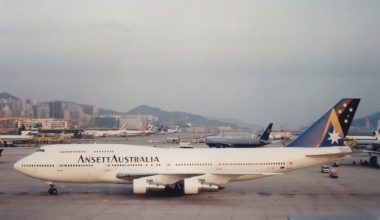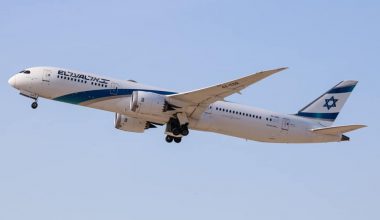Kalinin K-7 is one of the foremost metal monster Russian aircraft built in the 1930s. It is a manmade flying machine of genius inventiveness. Kalinin K-7 was a heavy experimental Russian airplane that featured an unusual configuration with twin booms and large underwing pods housing fixed-wing gear and machine gun turrets mounted inside the pods, designed in the early 1930s.
With a capacity to carry 120 passengers, it was powered by 7xMikulin AM-34F V-12 piston engines. It could fly as fast as 140miles per hour and be armed to the teeth with 8 20mm cannons and 8mgs in its gunship variant. This largest flying fortress is a true marvel of engineering for its time.

Built as a multi-mission aircraft, Kalinin K-7 was set to serve both military and civilian purposes. The powerful military aircraft K-7 could carry more than 16 tons of bombs, provided with 12 shooting positions and a unique electronic vehicle that ferried shooters to the bombers in the plane’s tail. It is a very impressive flying machine, but a complete failure as it exceeded its own loading weight and only achieved six flights before it crashed due to failure in tail boom, killing 14 people. The strange Russian Kalinin K-7 never made it beyond the experimental stage, but it helped to push forward the potentials of aviation technology and has written a history in Russian aviation to take the idea of multi-mission planes to the next era.
Specific introduction to Kalinin K-7
Kalinin K-7 is a human folly machine dating back to the era of 1930’s aviation. It debuted its first flight on 11 August 1933. The super heavy Kalinin K-7 is even bigger than today’s B-52 bomber plane as it has a wing area of 454 sq. km. Even with this monstrosity, it could get off the ground. It was equipped with a chrome-molybdenum steel airframe and had six tractor engines on the wing’s leading edge. One engine was fitted in the pusher configuration aft of the fuselage at the rear. Initially, it had seven engines which later made it to a total of 8 engines on the main wing due to exceeding maximum weight. Soviet Union manufactured K-7 in two years in Kharkiv, Ukraine beginning in 1931.
Also Read: How aircraft are protected from lightning strikes?
Kharkiv Aviation Factory possesses unusual aircraft and has a glorious history of more than 90 years, started in 1926.
Multi-mission K-7
Kalinin K-7 had an unusual construction that featured heavy bomber or civil transport missions. The aircraft was designed to carry 120 civilians and 11 crew, and 7 tons of mail on a civilian transport mission.

On gunship/bomber mission, K-7 was configured to accommodate 11 crew members and people to handle the machine guns, carrying 8×20 mm, 8×7.62 mm guns, 9.6 tons of bombs, and other weapons for carrier paratroopers. The aircraft could carry 112 fuel-equipped paratroopers and 11 crew as a troop transport.
Strange Kalinin K-7
Kalinin K-7 was an eye-catching airplane in contrast to today’s common and boring airplane that has similar standard designs. The one-of-a-kind Kalinin K-7 looks more like a tank with a wingspan of more than 170 feet, which is a cult icon for people fanatic about odd and weird-looking planes. The experimental Kalinin K-7 couldn’t dominate the Russian sky due to several problems. The 53m long wingspan of K-7 is more than twice the size of Martin B-10 that measured 21.5m.
K-7’s length was 28m and stood 12.4 m high with a service ceiling of 400 meters. The plane’s empty weight was 24,400 kgs and had a maximum take-off weight of 46,500 kg. It could store 9130l fuel in its wing tank and have 2-bladed fixed-pitch propellers.
This soviet plane installed a flying wing design with twin booms rather than using a fuselage. The massive wing housed a huge landing gear assembly along with multi-engines and was so tall internally that it could cater enough rooms, including sleeping quarters, staterooms, radio room, smoking lounge, and a small restaurant. The heavy bomber was designed by Konstantin Kalinin, who was a Soviet World War I aviator and aviation enthusiast. The Soviet veteran Kalinin was also the designer of successful K-4 and K-5, used for photographic surveys and as a reconnaissance airliner. They were small-sized aircraft having space for 10-12 passengers. K-5 quickly became the most produced Russian aircraft with 260 numbers built.

K-7, on the other hand, was designed to serve some of the Union of Soviet Socialist Republic (USSR)’s more remote locations that weren’t accessible to small-sized aircraft due to refueling issues. Intended for military long-distance heavy bomber and heavy transport plane, it was the crème de le crème of air travel when it commenced its first flight, but the design only remained as an experimental prototype as it was canceled in 1935.
Unsuccessful pioneer flight of Kalinin K-7
The maiden flight of Kalinin K-7 wasn’t successful as it showed some serious instability. The airframe resonating with the frequency of the engine created a serious vibration. At that time, deep research hadn’t been made regarding the natural frequencies of structures and their responses to vibration. So, the experts of that time shortened and strengthened the tail boom to solve the instability problem. The enormous propeller continued to create a lot of vibrations. Seven test flights were conducted with Kalinin K-7 before the aircraft crashed on 21 November 1933 as the tail boom suffered structural failure causing the elevator to be jammed. In aeronautics, an elevator is a flight control surface used to control the position of the nose of the aircraft by changing the airfoil shape of the horizontal stabilizer.
Design and uniqueness of sole-built Kalinin K-7
The grand Kalinin design in mammoth K-7 was the innovative aspect of a plane when dependence on foreign technology was minimal and considered vulnerable. The materials used in manufacturing this giant creation were lightweight steel-chrome-molybdenum instead of aluminum or even fabric-covered wood. The unique, home-grown materials sourced from inside USSR have an excellent strength-to-weight ratio. The Soviet-design parts were the unique aspect of this flying fortress that was expected to kickstart a Soviet aerospace industry. Structurally, twin booms made up the aft portion of the fuselage with wide-spanning wing assembly rounded at the wingtips. The aircraft’s cockpit and main crew area had a heavy framing to ensure good viewing. Welded steel provided the required tolerances while struts connected the gear equipment and fairings to the structure of the airplane proper.
Also Read: Concorde; Supersonic Passenger Airliner
The political significance of K-7
Instead of importing steel, Soviet Union made use of domestic steel entirely that depicted the victory of utmost political importance.
The eventual fate of Kalinin K-7
The versatile Kalinin K-7 is an ambitious and impetuous creation of the USSR, which was the largest aircraft to get off the ground on a propeller engine during its short-lived career. The eventual fate of Kalinin K-7 was devastating and similar to its chief designer Kalinin who was arrested and executed during Stalin’s senior-level purges or Great Terror of the late 1930s as he was accused of espionage and anti-Soviet activity.
The last of a handful of test flights during Kalinin K-7’s short tenure aloft resulted in the departure of K-7 from the USSR when it killed 14 people on board and one person on the ground. Russia’s entire effort on the production of K-7 or political intrigue created wide speculation around the aircraft’s crash regarding the potential of sabotage that couldn’t get a proper conclusion. Though two additional prototypes had been planned to pull double duty as a troop and civilian airliner in a propaganda win for the Soviet Union, they never got completed as the project was canceled in 1935. Only four years after manufacturing a single Soviet bomber plane, the project was quickly dropped by the USSR.

K-7 is a complete failure in terms of commercial operation. But it demonstrated the innovative and technological aspects of the USSR, which utilize domestic steel and aircraft designs which was a revolutionary change discarding foreign technology. Although K-7’s ultimate failure to partake in the thriving Soviet aviation industry destined it to be only an experimental aircraft, it has one of the most striking designs with a twin-boom fuselage and conspicuous underwing pods and remains a charming feat.
The aircraft of its own kind Kalinin K-7 is pretty cool in terms of size. However, aesthetic appeal and charm don’t always guarantee the commercial success of majestic aircraft. The largest propeller-powered plane, K-7, is a solid example of this. Once a state of art oddity, K-7 was arguably ahead of its time without the help of advanced computing technology and sophisticated wind tunnels.

About the Russian Aviation industry
Russia is a major country that specializes in the production and manufacturing of aircraft. With a long history of almost a century for Russian civil aviation, it has come far across to wining the supersonic passenger plane race from the first civil airliner DOBROLET. Airlines such as Aeroflot, Babyflots, Rossiya, Pobeda, S7 Siberian, and United Aircraft Corporation are the key players in the Russian aviation industry. Irkut MC-21 program coming with a Russian-built engine option is meant to end the long-run dominance of Airbus A320 and Boeing 737 aircraft.






